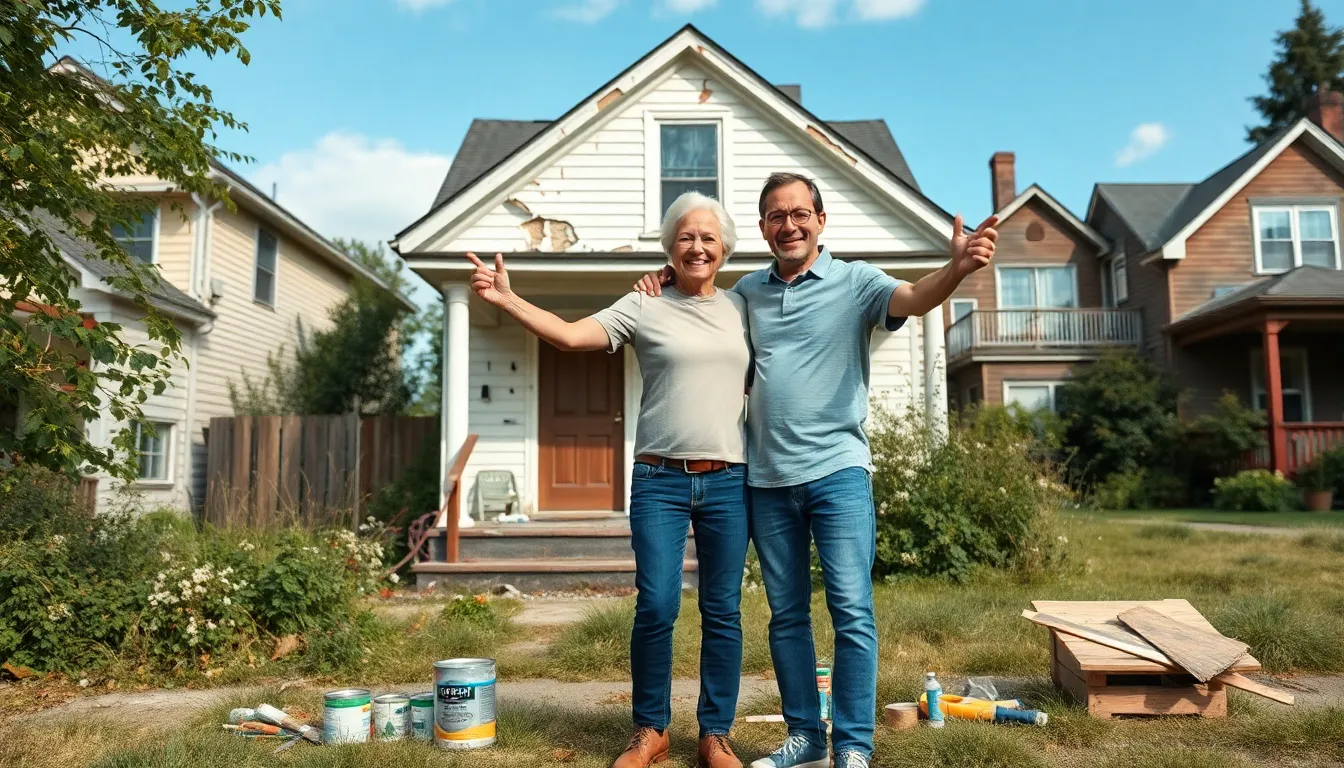Table of Contents
ToggleFlipping houses isn’t just for reality TV stars and wealthy investors anymore. It’s a thrilling adventure that anyone can embark on, armed with a little knowledge and a dash of courage. Imagine transforming a rundown property into a dream home and watching your investment grow faster than a teenager’s appetite after school.
Overview of Flipping Houses
Flipping houses represents an appealing opportunity for various individuals interested in real estate. It involves purchasing properties, renovating them, and selling them for profit.
What Is House Flipping?
House flipping refers to buying properties with the intention of making significant enhancements before reselling. Investors select properties in need of repairs or cosmetic changes, aiming to make improvements that increase market value. Strategies for renovations vary and include updates to kitchens, bathrooms, and landscaping. It’s essential to note that successful house flipping requires a keen understanding of market trends and financial planning.
Benefits of Flipping Houses
Several advantages come with flipping houses. First, investors can generate substantial profits when executed correctly. Transforming distressed properties into desirable homes can appeal to various buyers. Second, flipping houses allows for creativity; investors can personalize designs and renovations according to market demands. Lastly, the flexibility in choosing projects provides opportunities to learn and grow within the real estate market. Overall, the rewards can be significant for those willing to invest time and effort.
The Process of Flipping Houses


Flipping houses requires a systematic approach to maximize potential profits. Understanding each critical step helps investors navigate the real estate market effectively.
Finding the Right Property
Identifying the right property serves as the first major step in flipping houses. Investors should target neighborhoods with growth potential or areas undergoing revitalization. Criteria such as property conditions, location desirability, and market trends enhance selection. Research tools, including online listings and real estate networks, allow for better property searches. Engaging a real estate agent with local market expertise can also streamline the process. Analyzing comparables helps determine which properties offer the best potential for profit.
Assessing Repair Costs
Assessing repair costs ensures investors accurately estimate renovation expenses. He or she should conduct a thorough inspection of the property, noting required repairs and updates. Common areas to evaluate include roofing issues, plumbing problems, and cosmetic updates. Creating a detailed list of necessary repairs helps in budgeting. Seeking multiple contractor quotes provides a clearer understanding of potential costs. Factoring in a contingency for unexpected expenses is essential, as unforeseen repairs often arise during renovations.
Financing Your Flip
Financing options for house flipping influence the overall profitability of a project. Investors often choose between traditional loans, hard money loans, or cash purchases. Each option has unique requirements and implications on budget flexibility. Hard money loans, while more expensive, can offer quick funding for time-sensitive deals. Personal savings or investor partnerships may provide alternative financing solutions. Ensuring a robust financial plan helps manage cash flow during renovations and guarantees a smoother sales process.
Tips for Successful Flipping
Successful house flipping requires strategic planning and execution. Focus on making informed choices throughout the process for the best outcomes.
Choosing the Right Location
Selecting the right neighborhood greatly influences profitability. Properties in desirable areas typically experience quicker sales and higher price appreciation. Research local market trends and neighborhood amenities, like schools and parks, that attract buyers. Investigate recent sales data within chosen areas to gauge demand. Prioritizing accessibility to major transportation routes also enhances property appeal.
Designing for Sale
Design choices should appeal to potential buyers. Curated renovations that emphasize functionality and versatility can attract a wider audience. Opt for neutral colors and contemporary finishes to broaden buyer interest. Open floor plans often create an inviting atmosphere, facilitating a natural flow throughout the home. Additionally, investing in high-quality fixtures boosts overall property value while enhancing aesthetic appeal.
Working with Contractors
Skilled contractors are essential for efficient renovations. Building a reliable team helps ensure project timelines remain on track. Seek recommendations and thoroughly vet candidates by reviewing references and past projects. Networking in local real estate communities often leads to trustworthy professionals. Communicating clear expectations upfront also fosters a productive working relationship, minimizing misunderstandings during renovations.
Common Mistakes to Avoid
Flipping houses presents exciting opportunities, but missteps can significantly impact profits. Avoiding common pitfalls leads to more successful outcomes.
Underestimating Costs
Underestimating renovation costs is a frequent mistake. Many investors overlook hidden expenses, such as permit fees and potential structural issues. Conducting thorough inspections prior to purchase provides critical insights about necessary repairs. Creating a detailed budget that factors in all potential costs increases the likelihood of project success. It’s vital to incorporate a contingency fund into the budget, typically around 10-20% of total renovation costs. Doing so helps manage unexpected expenses effectively.
Over-Improving the Property
Over-improving the property can also derail success. Spending excessively on high-end finishes in a lower-end neighborhood often leads to diminished returns. Aligning renovations with local property values ensures a better return on investment. Buyers expect a certain standard based on neighborhood trends. Keeping renovations in line with comparable properties attracts a wider pool of potential buyers. Balancing quality and cost remains essential in enhancing market appeal. Adhering to overall budget constraints while addressing key features makes properties more sellable.





